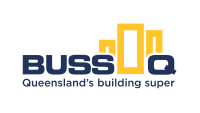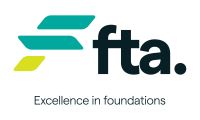- Home
- Services & advice
- Building, planning & development
- Building products
- Selecting the right product
Selecting the right product
Menu
- Membership
- Services & advice
- Products
- Training
- What's on
- News & publications
- Homeowners
- About
- Contact
- Terms & conditions
Related links
The National Construction Code (NCC) requires ‘evidence of suitability’ for products, materials, systems or designs used in the construction of buildings (A5G2 Evidence of suitability—Volumes One and Two).
If you don't have adequate ‘evidence of suitability’ then a product or system should not be used in regulated building work.
Therefore, before using a product or system in building work be sure you have assurance and/or evidence of the following:
- Its application and intended use
- How is complies with the NCC
- Any limitations and conditions of use
- Instructions for design, construction or installation
- Where to go to for further information and support.
Under Queensland NCP legislation, the onus is on the manufacturer and supplier to provide this information with the product.
The options for establishing ‘evidence of suitability’ include:
- Certificate of accreditation
- Report issued by an accredited testing laboratory
- CodeMark or CodeMark Australia Certificate
- Report from a professional engineer or appropriately qualified person
- Certificate issued by a JAS/ANZ accredited certification body
- Manufacturer’s Product Technical Statement
The right evidence will be determined by the specific circumstances.
For products where the consequences of failure would be severe or the likelihood of failure is high you should insist on evidence that is provided by an independent third party such as CodeMark Australia or a certification body.
The Australian Building Codes Board has produced an Evidence of Suitability Handbook to better understand the options and to help in ensuring that the manufacturer has provided the correct evidence for the product you're considering.
The Handbook introduces the Product Technical Statements as one way to establish ‘Evidence of Suitability’. A Product Technical Statement is provided by the manufacturer and includes the key essential information on a product (or system) compliance.
Many manufacturer industry bodies also provide their own product certification schemes. These schemes vary significantly in reliability. Schemes that are accredited under JAS/ANZ or use a accredited testing laboratory, and include a strong auditing and enforcement regime, will have the most rigour.
You can use our guide to help navigate these schemes and other sources of advice on product compliance.
Accepting evidence
In relying on the ‘evidence of suitability’ provided by a supplier or manufacturer, always make sure the testing/certification has been done by an appropriately registered/accredited body and that the evidence is current and genuine.
Counterfeit and fraud are rife so be alert to false documentation.
Standards change and quality varies so check that the evidence is current and directly relates to the product being supplied.
You may also want to:
- Ensure you’re dealing with a reputable supplier you can trust.
- Ask your supplier if they have recall insurance that covers the product.
- Notify the supplier in writing that the product is be used for regulated building work and is to comply with the relevant performance requirement of the NCC.
- Require the supplier to provide written guarantees and warranties that all materials supplied are to Australian Standards/NCC requirements.
If you’re after more information on achieving compliance, take a look at Procurement of Construction Products: A guide to achieving compliance from the Australasian Procurement and Construction Council.





